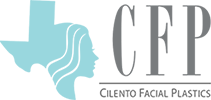Thinking about rhinoplasty? You’re not alone. Whether you’re hoping to refine your nasal bridge, correct a bump, improve breathing, or simply feel more confident, rhinoplasty can be a deeply personal journey. But before you get swept away in before-and-after galleries and surgeon reviews, it’s important to prepare for the most crucial part of the process: your consultation.
Knowing how to talk to your doctor about your rhinoplasty goals can make all the difference in both your experience and your outcome.
Step One: Get Clear on Your Why
Before you step into your surgeon’s office, take a moment to reflect on your own motivations. What is it that’s driving you to consider a nose job? Is it something that’s bothered you for years, or something new that’s affecting your confidence?
Be honest with yourself:
- Are you hoping to correct a specific feature, like a hump or bulbous tip?
- Are you aiming for better breathing?
- Do you want to feel more proportionate or symmetrical?
Getting clear on why you want the procedure—and what you hope it will change for you—can help your doctor understand what success looks like from your point of view.
Step Two: Use Descriptive, Not Vague, Language
Saying “I just want a better nose” might feel true, but it doesn’t give your surgeon much to work with. Try to be as descriptive and specific as possible.
For example:
- Instead of: “I hate my nose.”
- Say: “I feel like the bridge is too high in photos,” or “My nostrils feel uneven when I smile.”
It’s okay if you don’t know the technical terms—just explain how your nose makes you feel and what you’d like to change. A good facial plastic surgeon will help translate your concerns into a surgical plan.
Step Three: Bring Reference Photos (the Right Way)
Photos can be a helpful starting point. Not because your surgeon will copy someone else’s nose—but because visuals give insight into the aesthetic you’re drawn to.
Pick 2–3 photos of noses you admire that match your facial structure (skin tone, face shape, etc.). And be prepared to talk about what you like: Is it the slope of the bridge? The tip definition? The way it fits the face?
Keep in mind: the goal isn’t to replicate a celebrity’s face—it’s to find a balance that looks natural on you.
Step Four: Don’t Be Afraid to Ask Questions
Rhinoplasty is a big decision. During your consultation, you should feel empowered to ask anything that’s on your mind. Some questions to consider:
- What changes can realistically be made to my nose?
- What is your approach to rhinoplasty?
- How do you ensure results stay natural?
- What is recovery like?
- Will this affect my breathing?
- Do you have before-and-after photos of patients with similar noses?
A great surgeon will never rush you through this conversation. If you don’t feel heard, it’s okay to keep looking.
Step Five: Talk About Function, Not Just Form
While rhinoplasty is often thought of as cosmetic, it’s also a functional surgery. Many patients come in with breathing issues, past nasal trauma, or internal concerns that go unnoticed from the outside.
Make sure to share:
- If you snore or have sleep issues
- If you feel like one side of your nose is always blocked
- If you’ve had a broken nose or prior nasal surgery
A skilled facial plastic surgeon will consider both the structure and the function of your nose—because beauty and breathability should go hand-in-hand.
Step Six: Trust the Process, But Speak Up
Communication is key throughout your journey. If something feels off, unclear, or you have second thoughts before surgery, it’s okay to revisit the conversation. A doctor who values your trust will always be open to revisiting the plan and ensuring you feel confident every step of the way.
Rhinoplasty isn’t just about getting a new nose—it’s about finding the best version of you. And the best results come when you and your doctor are on the same page, from consultation to recovery.
Final Thoughts
Knowing how to talk to your doctor about your rhinoplasty goals can lead to a better, more customized experience. The right surgeon won’t just ask, “What do you want to fix?”—they’ll ask, “How do you want to feel?”
When you’re ready for that conversation, go in prepared, curious, and confident. Because when communication is clear, your results can be too.



